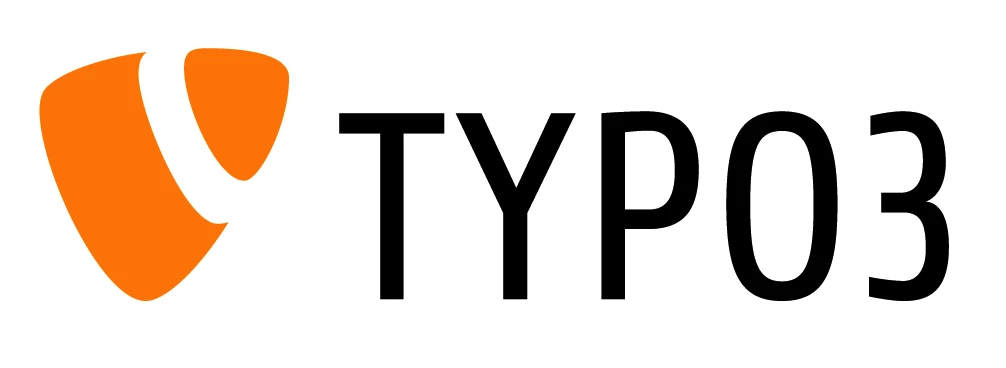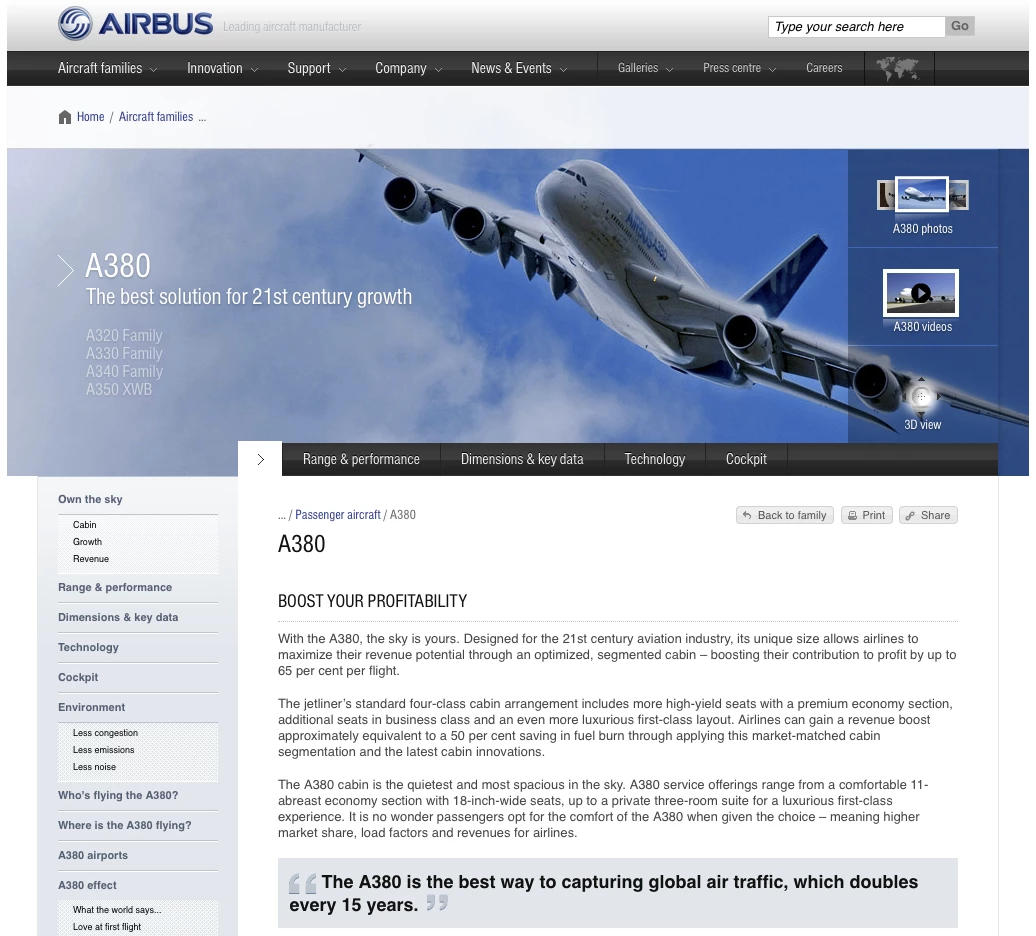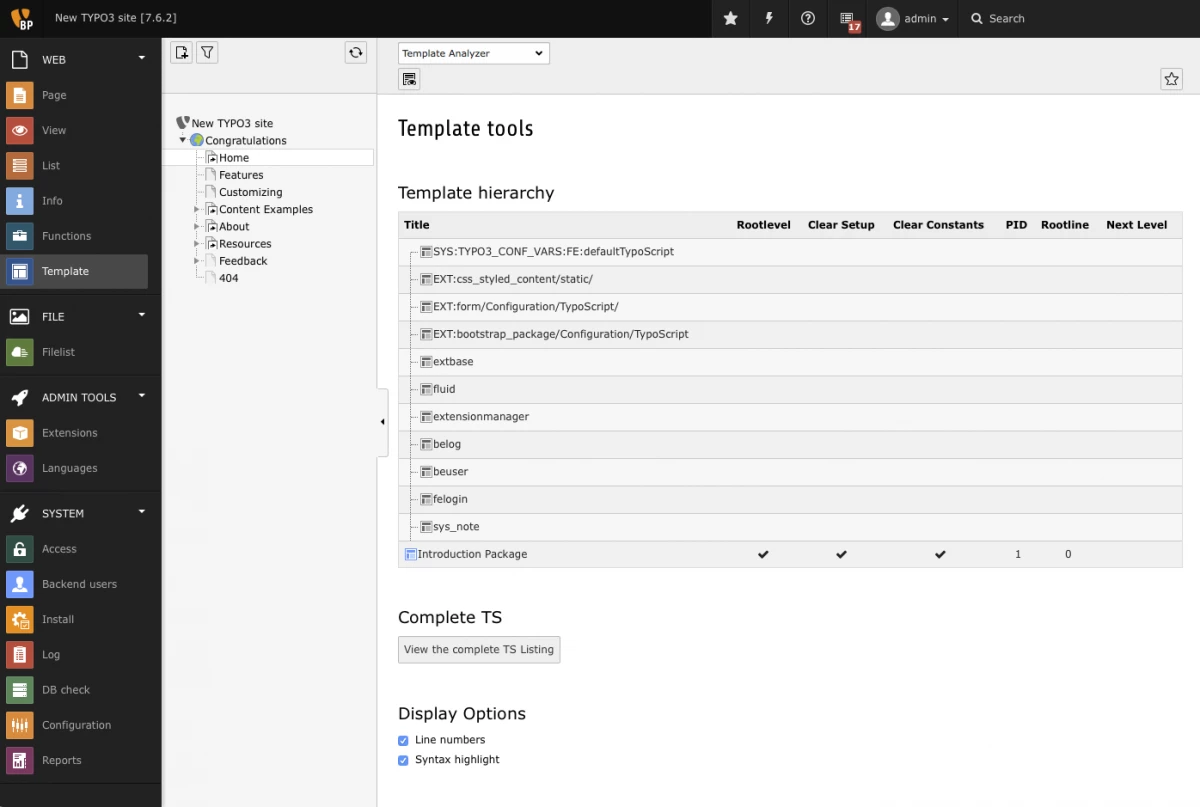
Typo3 is said, perhaps rightly, to be a heavy-duty engine developed for the programming pleasure of Bavarian engineers: it is a labour-intensive, complex platform, rather popular in Europe, especially in Germanic countries. The field in which this CMS excels is narrow. Do you just want a simple blog? A traditional enterprise or product Website? An on-line storefront? Then Typo3 is not for you, unless you’re already an expert with this platform, a masochist, or someone with a weakness for pointless complexity. To use a metaphor dear to the Typo3 community’s heart, you can’t compare a bicycle to an aeroplane: they serve different purposes. It follows that if learning WordPress is like riding a bicycle, then learning Typo3 is like getting your pilot’s license.
This PHP Content Management System was created by a Dane, Kasper Skårhøj, and released in 1997 under a commercial license. In 2000, Skårhøj decided to make it available under the GNU General Public License, making it that much more popular. In 2003, Typo3 benefitted from the significant contribution of French company Dassault Systèmes, specializing in CAD and 3D software, which also hired Skårhøj. In 2007, Typo3’s founder left the company to take on new challenges, namely studying the Bible and raising his children.
Under a previous iteration, Typo3 gave birth to a branch, Neos. Neos was supposed to be version 5 of Typo3, but it was such a significant overhaul that it was given a name of its own, Neos, and spun off in 2008. Typo3’s version 4 went its own way.
Typo3 is now on version 8. Its strong suit is the kind of complex, sprawling documentary sites favoured by large industrial multinationals or universities. It allows for painless management of hundreds of contributors, provides for granular access authorizations (not unlike Unix ACLs), and guarantees strict validation and publication workflow procedures, among others. Further, this CMS is highly regarded for its quality code; in fact, it has never encountered any major security issues. Version 8, released on March 28, features many improvements and requires PHP 7.0.
Speaking of aeroplanes, Airbus’s Website Typo3-based. Airbus’s many requirements, such as a large number of pages, a complex structure, several different languages, contributors from all over the world, and varied and sophisticated procedures, made Typo3 the ideal solution.

Large international organisations such as Unesco, Amnesty International and Greenpeace also use Typo3; in Quebec, it underpins many government Web sites, like that of the Ministry of Education and Higher Education, as well as university portals, such as the Research unit of the University of Montreal.

Above, an example of a Typo3 back-end: rather minimalist, and not terribly intuitive.
In short, Typo3 is a niche product that is well suited for sizeable projects with lots of specifications, but it is in no way a multipurpose CMS. Though it is reliable, secure and – a must for large companies – in it for the long haul, with its Long-Term Support (LTS) version, Typo3 is nevertheless a complex, sophisticated product requiring a significant start-up investment, even with the free software. It is up to you to determine whether you need a bike, a car or a plane!
(Note: The Association requires that we write it as “TYPO3”, but I hate typotyrants.)

